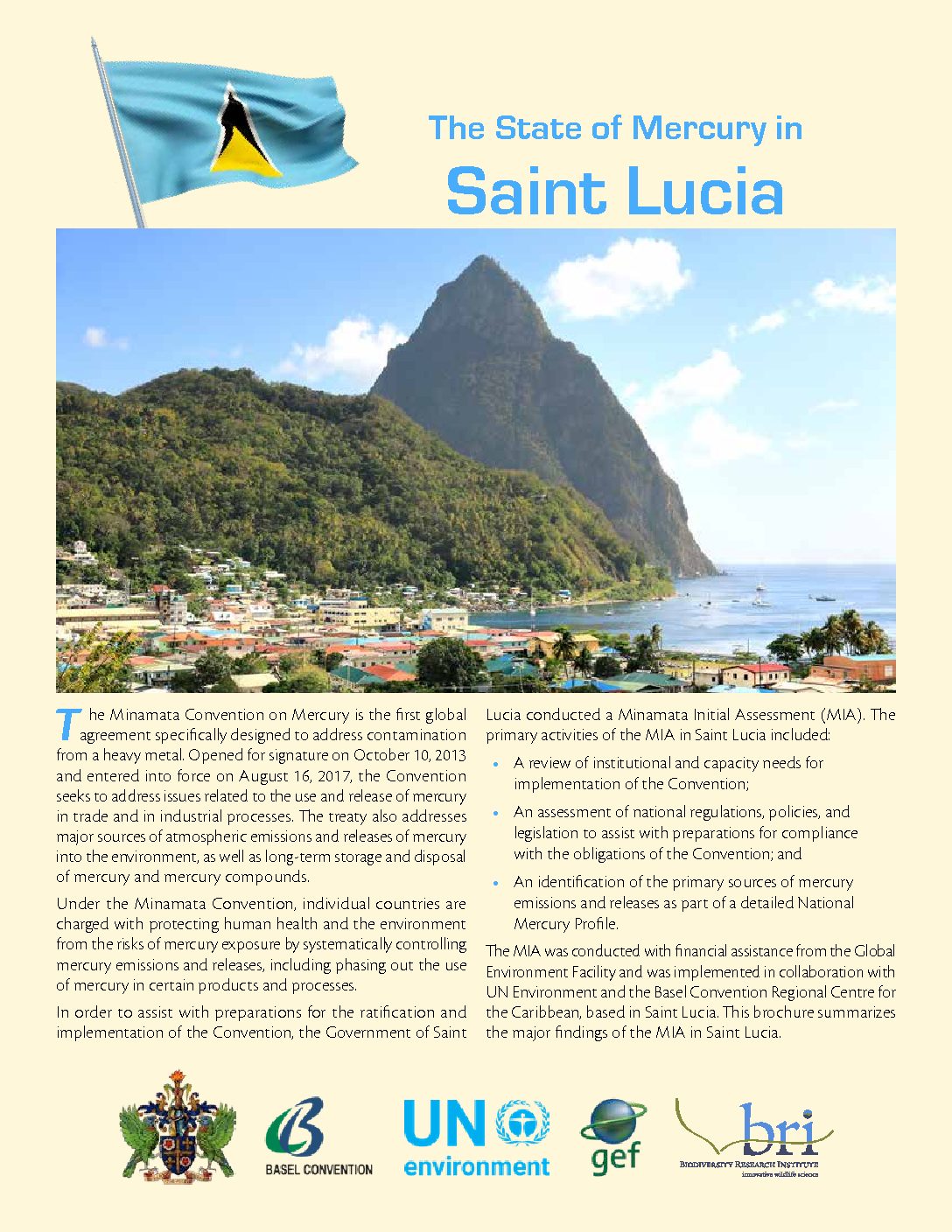Building a Mercury Monitoring Network

Laboratory networks for mercury and other contaminant analyses in regional hubs throughout the world, especially in mercury hotspots, will provide important information for the assessment of risk, both to humans and wildlife, in these environments.
BRI’s extensive mercury work in the Caribbean Region has led the way for the first network of integrated laboratories to be established. The primary toxicology laboratory will be located in Antigua and Barbuda, with secondary laboratories in other Caribbean countries. These labs will serve as the regional hubs for mercury analyses of abiotic and biotic samples that are used for assessing human and environmental health.
Download the Caribbean Region Mercury Monitoring Network report here.
Minamata Initial Assessments in Saint Lucia
As International Technical Experts, BRI assisted several small island developing states of the Caribbean, including Saint Lucia, as part of a regional Minamata Initial Assessment. The Basel Convention Regional Center for the Caribbean, based in Trinidad and Tobago, implemented the regional MIA project and BRI provided expertise to assist with the development of national mercury inventories for each participating country using UN Environment’s Toolkit for Identification and Quantification of Mercury Releases. The results of this regional MIA will assist Saint Lucia with meeting requirements outlined by the Minamata Convention to reduce mercury in the environment and exposure of mercury to humans.
Formal Capacity: International Technical Expert
Project Lead: David Evers
Funding/Implementing Agency: GEF/UN Environment
Executing Agency: Basel Convention Regional Center for the Caribbean
The State of Mercury in Saint Lucia

Under the Minamata Convention, individual countries are charged with protecting human health and the environment from the risks of mercury exposure by systematically controlling mercury emissions and releases, including phasing out the use of mercury in certain products and processes.
In order to assist with preparations for the ratification and implementation of the Convention, the Government of St. Lucia conducted a Minamata Initial Assessment (MIA).
Country Profile

- Population: 182,273 (World Bank 2013)
- Surface Area: 616 sq km
- Capital City: Castries
- Official Language: English
- Fish Production: 1,440 tons (FAO 2003)
- UN Membership Date: September 18, 1979
Mercury Inventory Training Workshop and Validation Workshop
Photo 1: Participants of the Minamata Initial Assessment Mercury Inventory Training Workshop, held in Port of Spain, Trinidad and Tobago, October 10-13, 2016.
Photo 2: Representatives of Saint Lucia at the Mercury Inventory Training Workshop, held in Port of Spain, Trinidad and Tobago, October 10-13, 2016.
Photo 3: Participants of the Minamata Initial Assessment Validation Workshop held in Saint Lucia, October 25, 2017.





